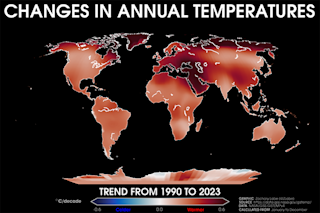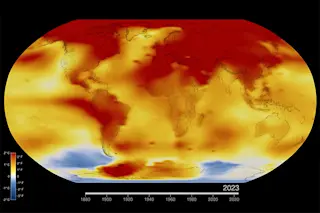True-color and false-color satellite views of a massive blaze in Australia's Blue Mountains just west of Sydney alternate in this animation. (Images: NASA) More than two thousand firefighters continue to battle blazes across New South Wales in Australia, with more than 20 fires still uncontained despite easing weather conditions, the Australian Broadcasting Corporation reports. The animation above shows true- and false-color satellite images of one of those fires, in the Blue Mountains just west of Sydney on the coast. The false color frame, based on data from NASA's Terra satellite, emphasizes the scar from the fire, which has so far torched a little more than 100 square miles — an area slightly larger than the city of Sacramento, California. The fires have erupted following some of the hottest climate conditions on record in Australia.
The darker orange color in the map above shows the portion of Australia that experienced record ...














